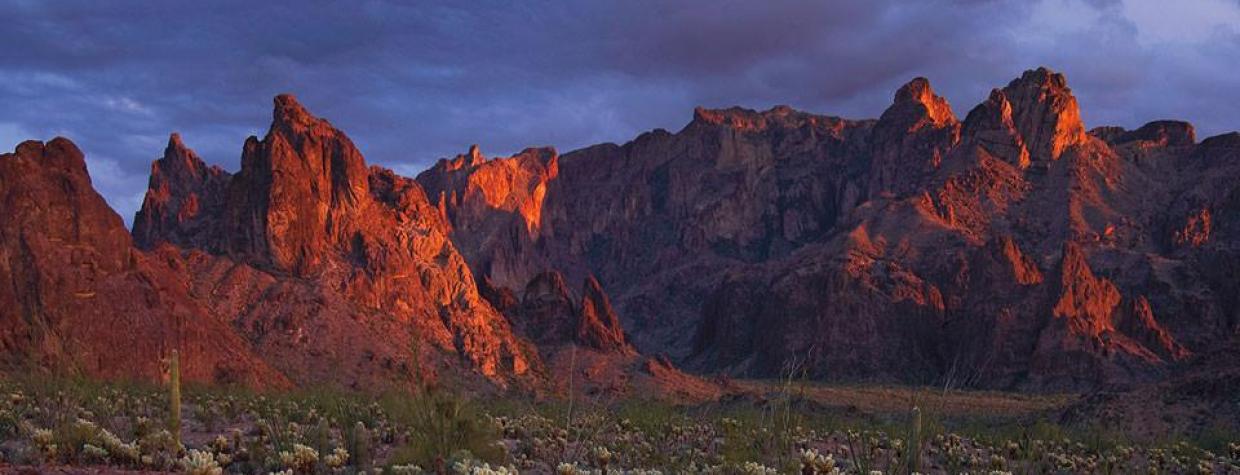Yuma and Quartzsite
For a few reasons, this destination is different from any other in this book. First, there’s no designated campground. Second, it’s the only national wildlife refuge in this guide. Third, it may be the only place you’ll see rare flora and fauna.
Visitors may camp anywhere, as long as they don’t do so within a quarter-mile of a watering hole, and vehicles must remain within 100 feet of designated roads. Big sky, big country and big opportunities to see animals such as foxes, desert bighorn sheep (one of the largest herds in the Southwest), deer and rabbits are the main attractions here.
A variety of plants — including the Kofa Mountain barberry, a plant found only in Southwestern Arizona — also draws botany buffs to the refuge. With more than 600,000 acres at your disposal, you’re bound to find something to do. Because of the lack of designated camping areas, though, it’s even more important to heed the Leave No Trace principles.
Campfire Tale: Arizona’s only native palm trees grow in Palm Canyon, a highlight of Kofa National Wildlife Refuge. Fewer than 100 are left. They are visible from Palm Canyon Trail, a National Recreational Trail from which you also might spot desert bighorn sheep.
Elevation: Varies across the refuge. Signal Peak in the Kofa Mountains is at 4,877 feet; Castle Dome Peak in the Castle Dome Mountains is at 3,788 feet.
Directions: From Yuma, travel north on U.S. Route 95 for 40 miles to the refuge.
Information: Kofa National Wildlife Refuge, 928-783-7861 or www.fws.gov
Season: November through April
Fee: None
Reservations: No
Amenities: Toilets, Water

